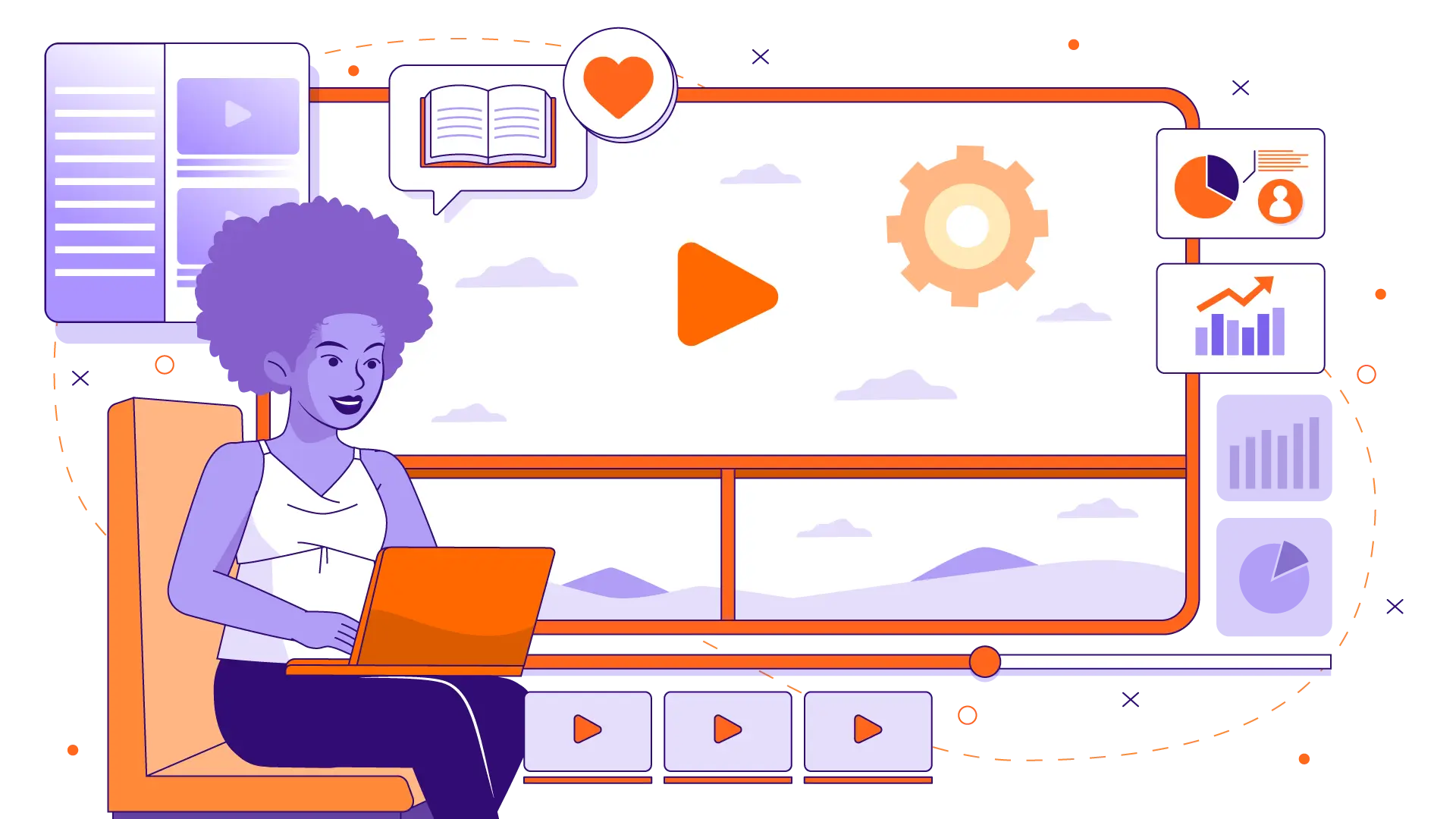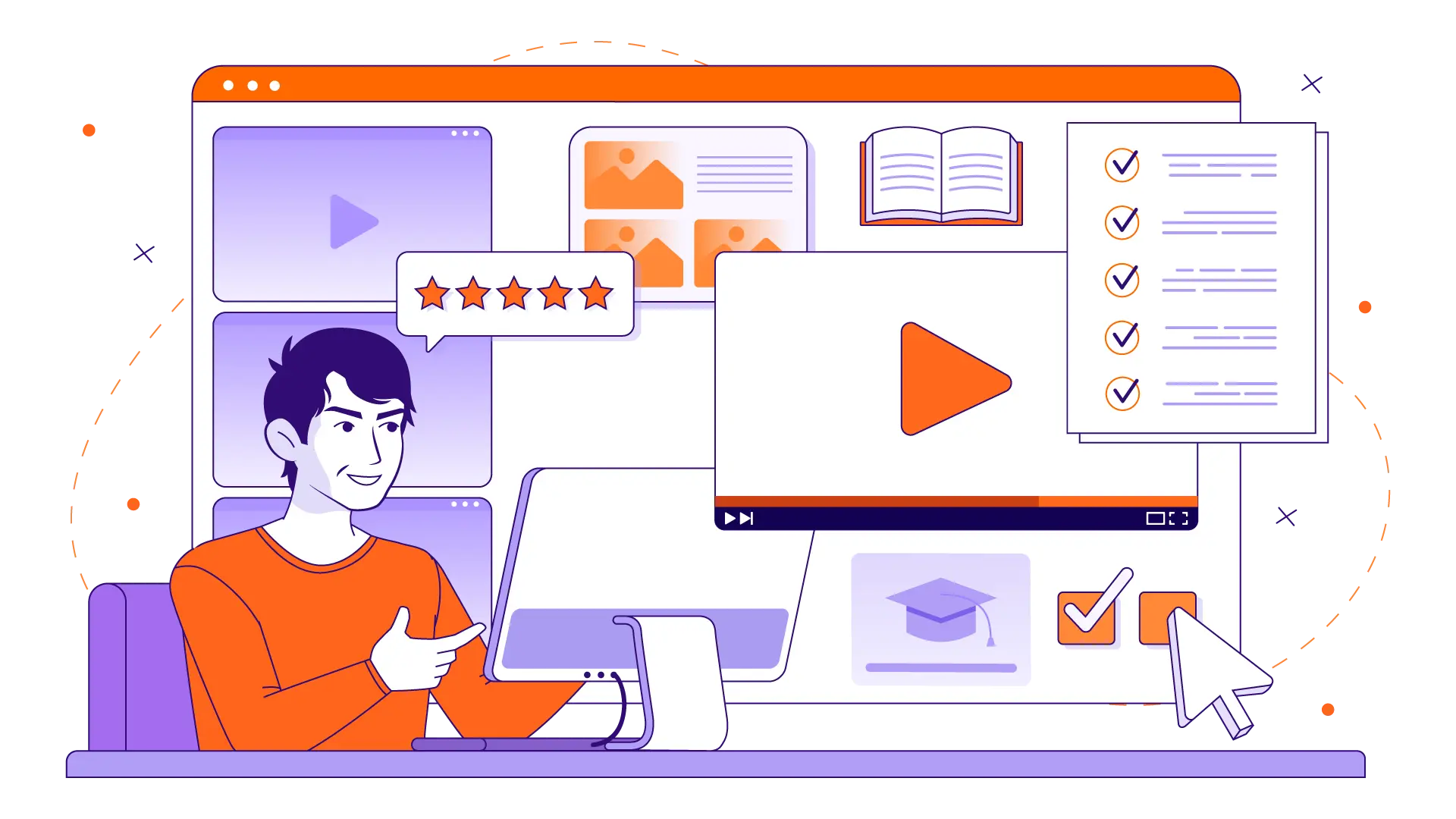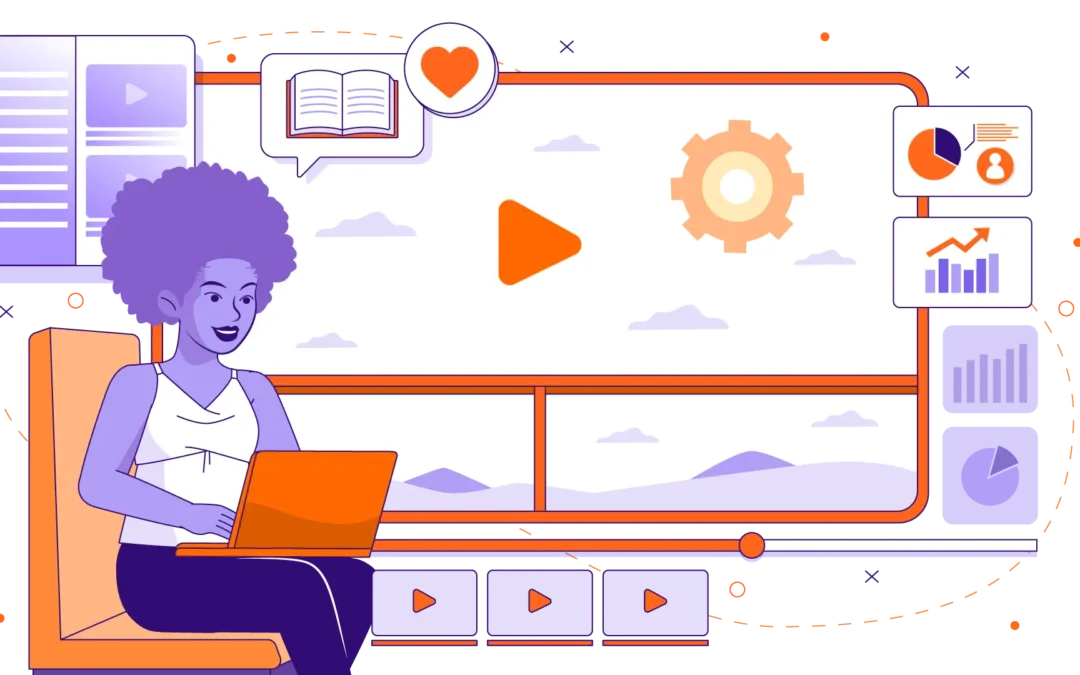
Corporate eLearning Solutions: Microlearning Video Examples
Modern corporate training requires innovative solutions. Employees want training that’s practical, engaging, and effective. Microlearning videos meet these needs by providing bite-sized, impactful lessons. Let’s explore how corporate eLearning solutions, particularly microlearning videos, can transform workplace training.
Self-Paced Learning Systems Employees Actually Want to Use
Employees often dread training programs. Why? Because they’re boring, lengthy, or irrelevant. Microlearning changes that. It delivers short, focused lessons that fit into busy schedules.
Imagine logging into a learning platform and seeing a five-minute video. The content is tailored, engaging, and practical. Employees feel motivated to learn because they see immediate value.
👉 Tip: Choose a learning platform with user-friendly navigation. Ensure that lessons are easy to find and complete. Gamification elements like badges or leaderboards can also boost engagement.
Create a Custom eLearning Program
Creating a custom eLearning program involves a systematic approach to ensure that employee training aligns with your organization’s goals and effectively addresses specific challenges. Here’s a detailed process to guide you:
Step 1: Conduct a Training Needs Analysis:
1. Identify Objectives:
Collaborate with team leaders and management to understand the overarching goals of the organization. Determine what skills and knowledge are essential to achieving these goals.
2. Gather Data:
Utilize surveys, interviews, and focus groups to collect feedback from employees. Ask about their current skills, knowledge gaps, and training preferences
3. Analyze Existing Programs:
Review existing training resources and performance data to identify areas needing improvement.
Step 2: Identify Skill Gaps and Organizational Priorities
1. Review Feedback:
Analyze the data collected from your needs analysis to pinpoint specific skill gaps within the workforce.
2. Prioritize Training Needs:
Rank the identified gaps based on their impact on organizational performance. Focus on the topics that will deliver the most significant improvements.
Step 4: Develop Content:
1. Choose Appropriate Formats:
Decide on the best formats for your training content (e.g., microlearning videos, interactive modules, or reading materials).
- Microlearning: Use short, focused videos that tackle specific topics—such as a two-minute animation that simplifies a complex process.
- Scenario-Based Learning: Create short videos that simulate real-world scenarios, allowing employees to practice decision-making in a safe environment.
2. Engage Subject Matter Experts:
Collaborate with experts to ensure the accuracy and relevancy of the content you create.
Step 5: Design and Build the Online Course
1. Create a Storyboard:
Outline the structure of your course, detailing the flow of content, interaction points, and assessment methods.
2. Incorporate Multimedia:
Use a mix of text, visuals, animations, and audio to enhance engagement and retention.
3. Include Assessments:
Integrate quizzes, polls, and interactive exercises to measure understanding and reinforce learning.
Step 6: Pilot the Program:
1. Select a Test Group:
Choose a representative group of employees to test the online course before a full rollout.
2. Collect Feedback:
Use surveys or discussions to gather feedback on content clarity, engagement, and practical applicability.
3. Make Adjustments:
Refine the course content based on the feedback received.
Step 7: Launch and Implement:
1. Roll Out the Training:
Deploy the program organization-wide. Ensure that employees are aware of the training and its benefits.
2. Provide Support:
Offer resources, such as mentorship or additional materials, to assist employees in understanding the corporate training content.
Step 8: Evaluate and Iterate:
1. Measure Outcomes:
Assess the effectiveness of the corporate training through assessments, performance metrics, and employee feedback after completion.
2. Continuous Improvement:
Use evaluation results to identify areas for improvement. Regularly update the content to keep pace with industry changes and evolving organizational needs.
By following this structured process, you can create a custom eLearning program that effectively meets the needs of your organization while delivering valuable training experiences for employees.

Learning Strategy
An effective learning strategy is designed with specific outcomes in mind, ensuring that corporate training initiatives are aligned with organizational goals and employee development needs. To create a successful learning program, ask yourself the following key questions:
- What specific knowledge do employees need to gain to excel in their roles?
- What particular skills should they focus on developing to enhance their performance?
- What changes in behavior are necessary to foster a more productive and engaged workforce?
Microlearning is an innovative approach that effectively supports these learning objectives. It provides a flexible, bite-sized format, making it easier for employees to absorb information at their own pace and on their own schedule. Microlearning can be seamlessly integrated into a blended learning strategy, which combines various educational methods for a richer experience.
For example, you can enhance traditional learning materials by incorporating engaging video content, interactive quizzes, and live sessions that promote real-time interaction and discussion. This multifaceted approach not only keeps employees engaged but also reinforces learning through repetition and varied formats.
To ensure your learning strategy is making an impact, it is essential to measure its effectiveness using analytics. By tracking key metrics such as course completion rates, quiz scores, and performance improvements over time, you can assess the return on investment of your corporate training initiatives.
This data-driven approach allows you to identify areas for improvement, adjust your strategy as needed, and ultimately enhance the personalized learning experience for employees. By focusing on outcomes and continually refining your approach, you can foster a culture of continuous learning and growth within your organization.
AI Strategy
AI can revolutionize eLearning. Use AI to personalize training pathways. For instance, an AI-driven learning platform can recommend microlearning videos based on an employee’s role or progress.
AI also streamlines content development. Tools like text-to-video generators help create professional videos quickly. This saves time and ensures high-quality output.
👉 Tip: Choose: AI tools that integrate easily with your existing systems. Start small, test results, and scale as needed.
Corporate eLearning & Microlearning Examples
Soft Skills Training
Investigate potential providers for their industry-specific experience. A provider with a solid track record in your sector will likely understand your unique challenges and requirements. Look for qualifications, certifications, and case studies that demonstrate their expertise and successful projects.
Product Training:
Ask for portfolios that showcase their previous work. A comprehensive portfolio will include a variety of projects, demonstrating their ability to create engaging and effective eLearning solutions. Pay attention to design quality, interactivity, and how they tailor content to different learning styles.
Process Training:
It’s essential to ensure that the provider can adapt their services to meet your unique organizational needs. Discuss your specific requirements and inquire about how they can modify their approaches to accommodate various learning environments, technologies, and subject matters.
Customer Training:
Focus on providers that prioritize delivering measurable outcomes rather than simply providing content. Discuss what metrics will be used to evaluate success, such as learner retention, engagement levels, or performance improvements after training.
Simulation Training:
After narrowing down your options to two potential providers, ask each one to create a prototype or proof of concept. This process will allow you to assess their approach to content development, instructional design, and creativity. Additionally, it will provide insight into how well their proposed solution aligns with your organizational goals and needs.
👉 Check out our award-winning portfolio and explore the endless possibilities of interactive learning 👈
Sales Training:
After narrowing down your options to two potential providers, ask each one to create a prototype or proof of concept. This process will allow you to assess their approach to content development, instructional design, and creativity. Additionally, it will provide insight into how well their proposed solution aligns with your organizational goals and needs.
Compliance Training:
After narrowing down your options to two potential providers, ask each one to create a prototype or proof of concept. This process will allow you to assess their approach to content development, instructional design, and creativity. Additionally, it will provide insight into how well their proposed solution aligns with your organizational goals and needs.
Technical Training:
After narrowing down your options to two potential providers, ask each one to create a prototype or proof of concept. This process will allow you to assess their approach to content development, instructional design, and creativity. Additionally, it will provide insight into how well their proposed solution aligns with your organizational goals and needs.
How to Choose the Right eLearning Solution
Choosing the right eLearning solution depends on your organization’s needs. Consider factors like content customization, scalability, and user experience. Microlearning is ideal for organizations that value flexibility and engagement.
👉 Tip: Pilot your eLearning solution with a small group. Gather feedback and make adjustments before a full rollout.

Custom eLearning vs. Traditional Off-the-Shelf Learning
Custom eLearning is tailored to your organization. It addresses specific goals and challenges. Off-the-shelf learning offers pre-made content that may not fit your needs.
Custom eLearning provides better results because it’s relevant and engaging. Microlearning videos, for instance, can target exact pain points. Off-the-shelf courses often lack this precision.
👉 Tip: Weigh the cost and impact of each option. Custom eLearning may require more investment upfront but delivers better ROI in the long run.
- Cost Concerns: Custom solutions are an investment, but they’re worth it.
- Lack of Clarity: Companies often struggle to define their learning objectives.
- Overwhelming Options: With so many providers, it’s hard to know where to start.
eLearning FAQ
Q: What is microlearning?
A: Microlearning is a training method that delivers content in short, focused segments. It’s ideal for busy professionals who need quick, actionable lessons.
Q: How long should a microlearning video be?
A: Most microlearning videos are 2-5 minutes long. Keep them concise to maintain engagement.
Q: Can microlearning be used for all training types?
A: Yes. Microlearning works for soft skills, technical skills, compliance, and more. Adapt the format to suit the training topic.
Q: What tools are needed to create microlearning videos?
A: Use tools like Articulate Storyline, Adobe Captivate, or AI-driven learning platforms. These tools simplify content creation and ensure professional results.
Q: How do I measure the success of microlearning?
A: Track metrics like completion rates, quiz scores, and performance improvements. Surveys can also provide valuable feedback.
Microlearning videos offer a powerful way to train employees. They’re flexible, engaging, and results-driven. By investing in custom eLearning solutions, you can create training programs that employees actually want to use. Prioritize content that builds skills, influences attitudes, and achieves measurable outcomes.
DOWNLOAD YOUR KEY TO KNOWLEDGE
Access Valuable Resources to Fuel Your Learning Journey


